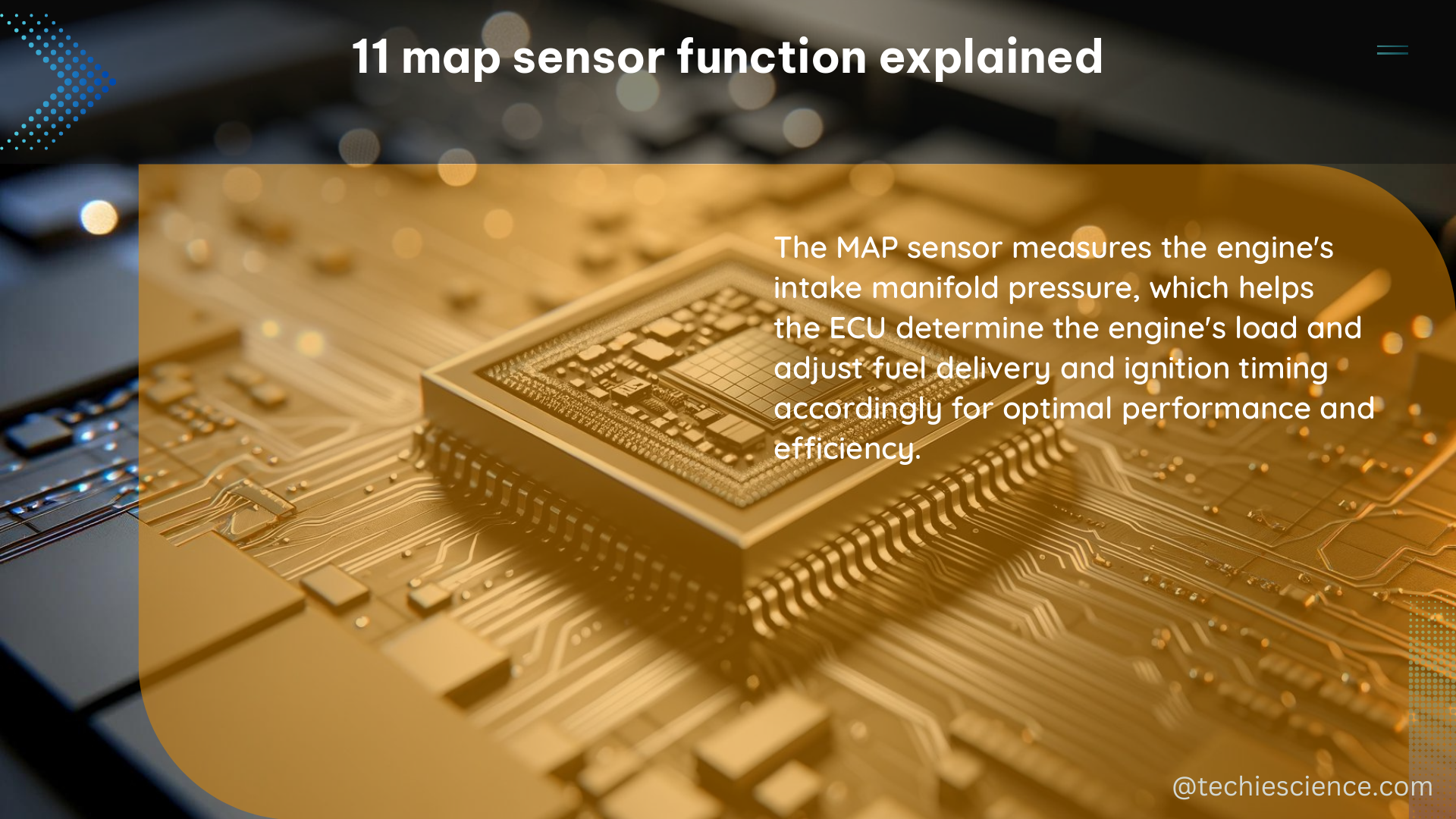The manifold absolute pressure (MAP) sensor, also known as the 11 map sensor, is a critical component in modern automotive engines. It plays a vital role in providing the engine control unit (ECU) with essential data for managing fuel injection, ignition timing, and other critical engine functions.
Understanding the Pressure Range of MAP Sensors
MAP sensors are designed to cover a wide range of pressure measurements, typically from around 50 kPa (vacuum) to 250 kPa (boost). This extensive pressure range allows the sensor to accurately detect and respond to various engine operating conditions, from idle to full throttle.
| Pressure Range | Typical Values |
|---|---|
| Vacuum | 50 kPa |
| Boost | 250 kPa |
The ability to measure this broad pressure range is crucial for the ECU to make informed decisions about fuel delivery, ignition timing, and other engine parameters, ensuring optimal performance and efficiency.
Accuracy and Response Time of MAP Sensors

Accurate pressure measurements are essential for the proper functioning of the engine management system. MAP sensors are designed to provide pressure readings with a high degree of accuracy, typically within ±1% to ±3% of the full-scale range.
In addition to accuracy, MAP sensors must have a fast response time, typically in the order of milliseconds, to keep up with the rapid pressure changes that occur during engine operation. This rapid response allows the ECU to make real-time adjustments to the engine’s parameters, ensuring smooth and efficient performance.
Temperature Range and Signal Type of MAP Sensors
MAP sensors are designed to operate over a wide temperature range, typically from -40°C to +125°C, to accommodate the various environmental conditions that the engine may encounter, such as extreme cold or hot climates.
The signal type of the MAP sensor can vary, with some providing an analog voltage output and others using a digital pulse-width modulation (PWM) signal. The ECU is responsible for interpreting these signals to determine the current engine operating conditions.
Locating and Testing the MAP Sensor
To understand the function of the MAP sensor, it is essential to first locate it on the vehicle. The MAP sensor is typically mounted on the intake manifold or near the throttle body. Consult the vehicle’s service manual for the exact location.
Once the MAP sensor is located, you can test its operation using a multimeter. Check the sensor’s output voltage at different engine operating conditions, such as idle, acceleration, and high load. Compare the readings with the values specified in the vehicle’s service manual to ensure the sensor is functioning correctly.
Replacing a Faulty MAP Sensor
If the MAP sensor is found to be faulty, it is essential to replace it with a new one that matches the original equipment manufacturer (OEM) specifications. Ensure that the replacement sensor has the same pressure range, accuracy, response time, and temperature range as the original.
Proper installation and calibration of the new MAP sensor are crucial for the engine management system to function correctly and maintain optimal engine performance.
Conclusion
The 11 map sensor, or manifold absolute pressure (MAP) sensor, is a critical component in modern automotive engines. It provides the ECU with essential data about the pressure in the intake manifold, allowing the engine management system to make informed decisions about fuel injection, ignition timing, and other critical functions.
By understanding the technical specifications, operation, and testing procedures for the MAP sensor, you can ensure that your vehicle’s engine management system is functioning correctly and maintain optimal engine performance.
References
- AFDP 3-0 Operations and Planning – Catalog of Doctrine Topics: https://www.doctrine.af.mil/Portals/61/documents/AFDP_3-0/3-0-AFDP-OPERATIONS-PLANNING.pdf
- Defense Acquisition Guidebook – DOT&E: https://www.dote.osd.mil/Portals/97/docs/TEMPGuide/DefenseAcquisitionGuidebook.pdf
- FM 5-0 – Central Army Registry: https://rdl.train.army.mil/catalog-ws/view/100.ATSC/46BBB965-286D-4642-83BE-A4EE1CE42B46-1308623627080/fm5_0wc1.pdf
- Encord Blog – DINOv2 Self-supervised learning model explained: https://encord.com/blog/dinov2-self-supervised-learning-explained/

The lambdageeks.com Core SME Team is a group of experienced subject matter experts from diverse scientific and technical fields including Physics, Chemistry, Technology,Electronics & Electrical Engineering, Automotive, Mechanical Engineering. Our team collaborates to create high-quality, well-researched articles on a wide range of science and technology topics for the lambdageeks.com website.
All Our Senior SME are having more than 7 Years of experience in the respective fields . They are either Working Industry Professionals or assocaited With different Universities. Refer Our Authors Page to get to know About our Core SMEs.